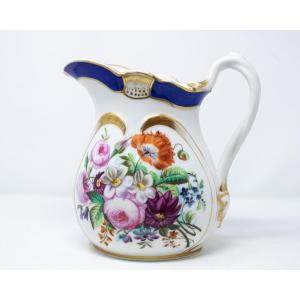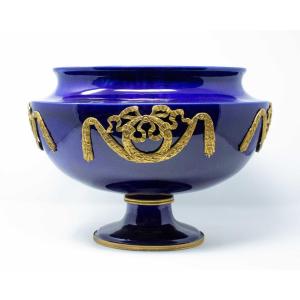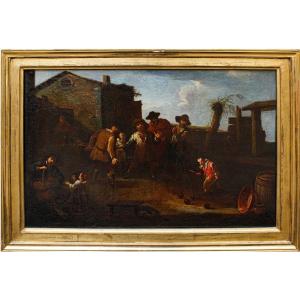Four landscapes
(4) Oil on board, cm 36 x 48
With frame, cm 51,5 x 63
Landscapes with a dreamlike flavor and natural ecstasy permasero in the collective neoclassical imagination as favorite architectural background. The monuments variously recorded by artists, always ready to perfect fantasy, also boasted the charm of the classic myth, collected with full hands and converted into visual narration. In the present group of paintings, the gentle cadence of the panorama, which is enriched by the different daylight, introduces to the more poetic sentimentalism of neoclassicism, highlighted by the sacral lens chosen by the artist to analyze the various moments. The formal and dispositive choice of number four, given the careful neoclassical climate that sought the scientificity of classicism, then manifests the intrinsic meaning to the present paintings. In the history of art, number four fits recurring iconographies. The four natural elements become, for example, a pretext to highlight human activities, as happens in the series of paintings by Vincenzo Campi and now kept at the Milan Pinacoteca di Brera. Due to the attributes of the characters represented, it is possible to isolate the respective reference element: The fruit growing, exposing the abundance of fruits and vegetables, exacerbates the fertility of the earth. If in the Pollivendoli it is possible to recognize the action of air, due to the animals subject of manifestation, in the Pescivendoli there is water. Finally, in the Nordic Kitchen where a lively congerie of actors close to the most characteristic actions is engaged, one recognizes, by reference, the element of fire.The Bassanese family, promoter of concerted compositions, certainly took the example of Jacopo (1510-1592) in the tireless re-proposal of the Seasons, always enriched with new elements. The series now attributed to Jacopo and kept at the Galleria Borghese in Rome shows with slow progress human survival during each season. The four cardinal virtues constitute, on the other hand, together with the three theological ones, the sum of ethics desirable by man. The number four refers to humanity, and therefore the same virtues are attainable by all believers. Sandro Botticelli (1445-1510) represented them in feminine forms, with hieratic power: prudence, justice, fortitude (Florence, Uffizi Galleries).
Likewise, only four people were considered because of mythical-religious beliefs that conditioned the explorations, the continents of the known world were stigmatized by Giambattista Tiepolo (1696-1770) In a majestic fresco executed for the Honour Staircase of the residence of the Prince-Bishop of Würzburg. The generous details that accompany each personification allow you to easily recognize America, Asia, Africa and Europe. Last but not least, the four evangelists owe their number to the metaphorical association with the four corners of the earth. The action of their apostolate, extensible Urbi et orbi, was linked to the old Testament tetramorfo, as witnessed by the paintings of Nicola Grassi (1682-1748), now kept in the parish church of Ampezzo.






































 Le Magazine de PROANTIC
Le Magazine de PROANTIC TRÉSORS Magazine
TRÉSORS Magazine Rivista Artiquariato
Rivista Artiquariato